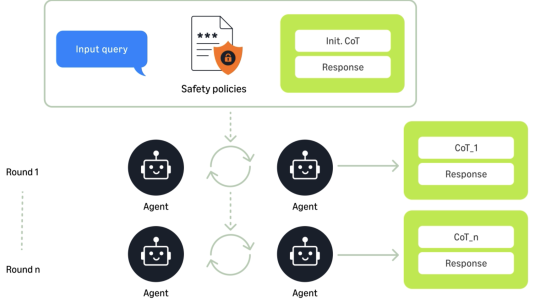Customer-obsessed science


Research areas
-
July 31, 2025Using ensembles of agents to generate and refine interactions annotated with chains of thought improves performance on a battery of benchmarks by an average of 29%.
Featured news
-
2024This paper introduces Q-tuning, a novel approach for continual prompt tuning that enables the lifelong learning of a pre-trained language model. When learning a new task, Q-tuning trains a task-specific prompt by adding it to a prompt queue consisting of the prompts from older tasks. To better transfer the knowledge of old tasks, we design an adaptive knowledge aggregation technique that reweighs previous
-
2024Understanding data visualizations like charts and plots requires reasoning about both visual elements and numerics. Although strong in extractive questions, current chart visual question answering (chart VQA) models suffer on complex reasoning questions. In this work, we address the lack of reasoning ability by data augmentation. We lever-age Large Language Models (LLMs), which have shown to have strong
-
ASPLOS 20242024This paper introduces Fermihedral, a compiler framework focusing on discovering the optimal Fermion-to-qubit encod-ing for targeted Fermionic Hamiltonians. Fermion-to-qubit encoding is a crucial step in harnessing quantum comput-ing for efficient simulation of Fermionic quantum systems. Utilizing Pauli algebra, Fermihedral redefines complex constraints and objectives of Fermion-to-qubit encoding into a
-
2024Existing dense retrieval systems utilize the same model architecture for encoding both the passages and the queries, even though queries are much shorter and simpler than passages. This leads to high latency of the query encoding, which is performed online and therefore might impact user experience. We show that combining a standard large passage encoder with a small efficient query encoder can provide
-
2024We investigate the problem of synthesizing relevant visual imagery from generic long-form text, leveraging Large Language Models (LLMs) and Text-to-Image Models (TIMs). Current Text-to-Image models require short prompts that describe the image content and style explicitly. Unlike image prompts, generation of images from general long-form text requires the image synthesis system to derive the visual content
Academia
View allWhether you're a faculty member or student, there are number of ways you can engage with Amazon.
View all





























